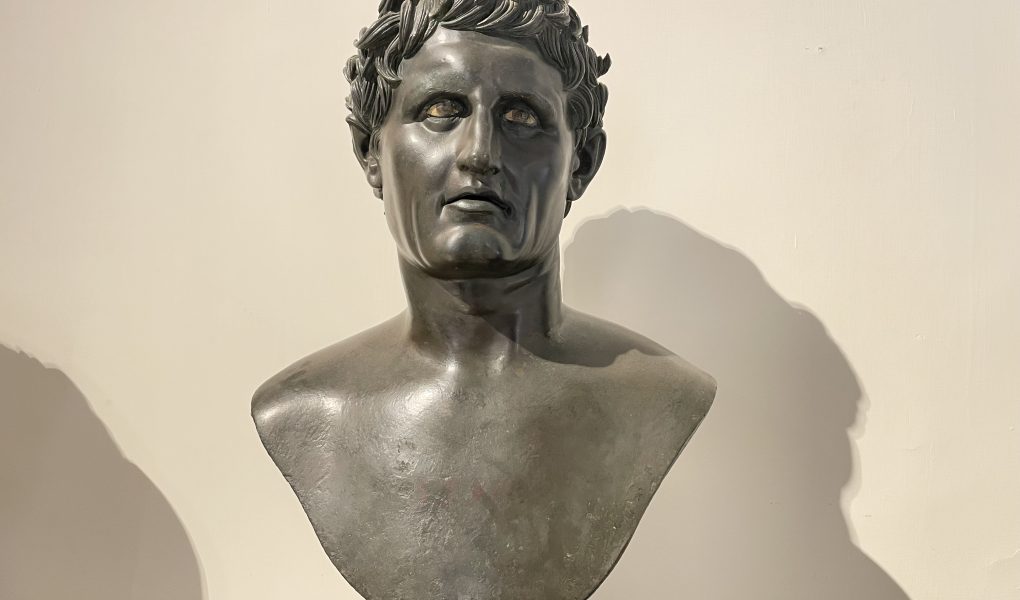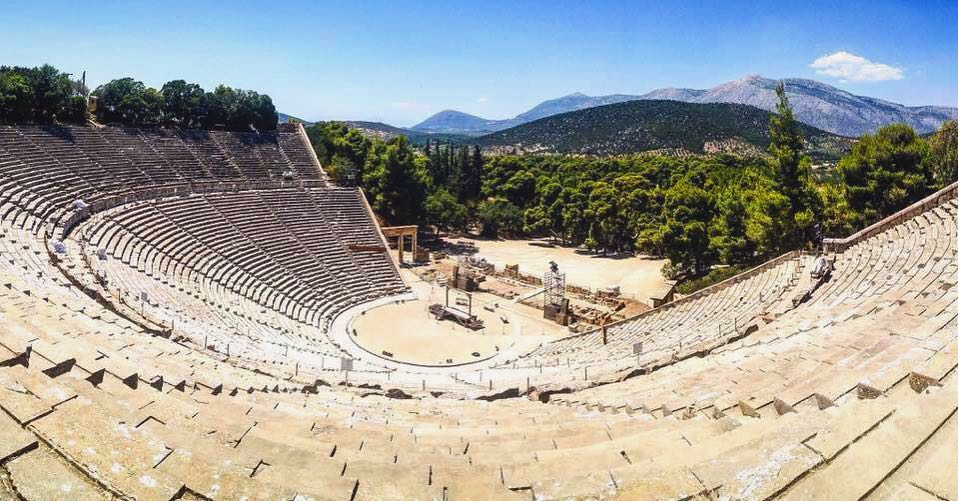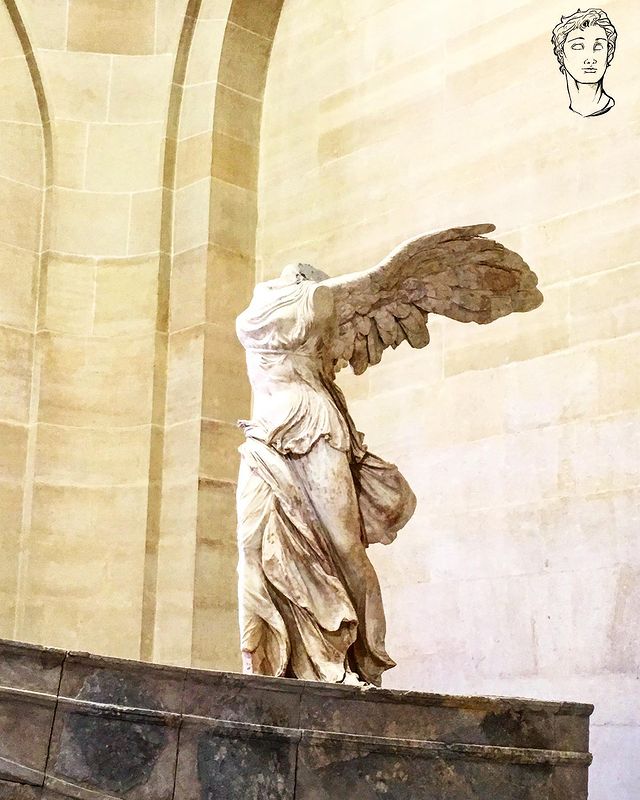The academic year has started again, so it is time for another guest post. This time Derek from the Hellenistic Age Podcast delves deeper into the connections of the ancient city of Babylon with the Seleucid Dynasty. How did the Seleucid rulers navigate the complexities of Babylonian traditions and local customs? What lessons can we learn from this historical relationship between the Seleucids and Babylon about the complexities of governing diverse and culturally rich regions in ancient history? Read on to find out!
For nearly two hundred years, much of Asia was under the rule of the Seleucid dynasty. Despite the family’s origins tracing back to Macedonia and its members presenting themselves as Macedonian kings par excellence, the sheer diversity of their subjects meant they needed to contend with the many non-Greek cultures that they now ruled over. The greatest body of evidence for the Seleucids accommodating to local traditions can be found in Mesopotamia, more specifically in Babylon. Though it had been centuries since the last native ruler, Babylon and its elite would hold great sway in the imperial ideology of their new Seleucid masters. Babylon is where the founder Seleucus I Nicator first took power, and Mesopotamia remained a heartland of the empire until it was captured by the Parthians in the late second century BC.
From the earliest days of the dynasty’s history, Babylonia was integral to the rise of the Seleucids. Alexander the Great had designated it as the capital of his newly conquered empire down to his untimely death in 323, and the city is where the standing regent Perdiccas ran operations until his own murder just a few years later in 321. As a reward for taking part in the assassination, Seleucus was granted governorship of Babylonia.[1] His position was soon threatened by the ambitious Antigonus Monopthalmus, forcing Seleucus and his family to flee to the court of Ptolemy I in Egypt in 315. He was eventually able to return in the spring of 311, but faced off against Antigonid forces who besieged the city and ravaged the countryside for two years.[2] Once the “Babylonian War” was brought to an end, Seleucus would take the title of king in 306, and Mesopotamia was to serve as the foundation of his burgeoning empire. The area was badly affected during the fighting, but Babylonia was exempt from any further devastation as later wars were contained to the eastern Mediterranean.[3] In time it would prosper once again, now under the patronage of Seleucus and his son Antiochus I Soter (r. 281-261), and it is during Antiochus’ reign that we find our earliest and strongest evidence of Seleucid-Babylonian accommodation.
In the excavations of Borsippa, located 18 km southwest of Babylon, a barrel-shaped piece of clay with Akkadian cuneiform was discovered under the Temple of Ezida, devoted to the Mesopotamian god Nabû.[4] It bears a striking similarity to the famous “Cyrus Cylinder”, a deposit made in the Temple of Esagila under the authority of Cyrus the Great of Persia in 539 BC. While often misleadingly described as the “first bill of human rights”, its main purpose is to broadcast the legitimacy of Cyrus as the new ruler of Babylon. The cylinder of Ezida was placed during the reign of Antiochus I in 268 to celebrate the rebuilding of the temple, which was likely damaged during the Babylonian War, and operates under very similar principles:
I am Antiochus, the great king, the legitimate king, the king of the world, king of Babylon, king of all countries, the caretaker of the temples Esagila and Ezida, the first son of King Seleucus, the Macedonian, king of Babylon
When I conceived the idea of (re)constructing Esagila and Ezida, I formed with my august hands (when I was still) in the country Hatti [Syria] the (first) brick for Esagila and Ezida with the finest oil and brought (it with me) for the laying of the foundation of Esagila and Ezida.[5]
Other tablets record Antiochus’ activities in Babylon, such as his sacrifice to the moon god Sin and the rebuilding of the temple of Esagila, where he ended up using teams of elephants to clear much of the ruins and debris.[6] While providing a sacrifice at Esagila, the king is said to have tripped and tumbled to the ground, a bad omen by any estimation. It seems not to have affected him much, and he performed “a Greek sacrifice” to counteract any negative energy this may have incurred. Through his maintenance and patronage of the temples, Antiochus is fulfilling his duties as the legitimate king of Babylon, and the titles employed in the cylinder (“king of the world”, “great king” etc.) are directly taken from earlier Babylonian, Persian, and Assyrian models.[7] Queen Stratonice I also receives special honors on the cylinder: her titles in Akkadian are normally reserved for goddesses, and her name is translated into Aštartanikku (“Astarte-fornicating”).[8]
This policy of accommodation and respect of the local traditions would have served Antiochus well as he sought to consolidate his father’s empire, and it might also be reflected in his personal staff. Bêl-re’ušunu, better known by his Greek name Berossus, was a Babylonian official serving in in the court of Seleucus and Antiochus I. He is most famous as the author of the “Babyloniaca”, a history of Babylonia written in Greek that is now lost, but partially survives in fragments and quotations.[9] While the style is evocative of authors like Herodotus, it catalogued the mythology and traditions of Mesopotamia. Berossus may have been compelled to write it in order to legitimize Babylonian culture for a Greek audience, or to act as a handbook for Antiochus, to whom the book is dedicated. Antiochus was born and raised in Babylon, having never laid eyes on Macedonia, and so we might not need to view his apparent affinity for local traditions as a matter of pragmatism. The line in the Antiochus Cylinder referring to his father as “King Seleucus, the Macedonian” is unusual, since it can either be interpreted as Antiochus stressing his own Greco-Macedonian ancestry or an attempt to distinguish himself as a king reared in the Babylonian model.[10]
Nabû’s connection with the notion of kingship is especially relevant. Babylon would play host to the Akītu festival at the beginning of their new year (approximately late March/early April), where a statue of the god would be ferried by boat from Borsippa to Babylon with the participation of the king. A tablet dating to the Hellenistic period provides an elaborate description of the ceremonies involved. On the fifth day of the celebrations, the king greeted the arrival of Nabû, and heading to the Temple of Marduk at Esagila. He removed his royal garb before entering the inner sanctum, where the head priest sat waiting inside. The priest then slapped the king hard across the face, and demanded a confession:
[I have not] sinned, lord of the lands, I have not neglected your divinity,
[I have not] ruined Babylon, I have not ordered its dissolution,
[I have not] made Esagila tremble, I have not forgotten its rites
…
[I have been taking ca]re of Babylon, I have not destroyed its outer walls![11]
We know that Seleucus III participated in the festival of 224, as did Antiochus III in 204.[12] How frequently they did so is unknown, and it might be argued that these recorded instances were exceptional. The willingness to participate in this ritual humiliation may be surprising, but the Seleucid’s connection with Nabû fit neatly into their own dynastic propaganda. As the Babylonian god of wisdom and scribes, the Greeks seem to have identified him with Apollo, who was especially tied to oracles. Apollo was also the patron deity of the Seleucids, appearing on their coins and royal propaganda.[13] This development seems to have taken place under Antiochus I, since Macedonian kings traditionally served as the chief priests of Zeus, which is well documented in the reign of his father.[14] Stratonice’s transliterated name Aštartanikku is a reference to Astarte-Ishtar, the Babylonian goddess of love who is identified as Aphrodite by the Greeks, a figure heavily associated with queens throughout the Hellenistic period.[15]The Akītu festival may also be directly linked to the Seleucid Era, the world’s first continuous dating system, with “Year 0” being retroactively linked to Seleucus’ return to Babylon in the spring of 311, which aligns with the Babylonian new year.[16] Thus we see Seleucid ideology and Babylonian ceremony walk hand-in-hand in strengthening the dynastic claim to empire.
As the most well-traveled and warlike member of the dynasty since Seleucus I, Antiochus III “the Great” (r. 223-187) also partook in these festivals, but he also was given special treatment befitting his epithet. In the Babylonian Astronomical Diary documenting the events of 187, Antiochus made his rounds between the temples in order to offer sacrifices. We are also told that he was presented with several gifts like a golden crown and other temple treasures. Among these goods was a robe purportedly belonging to Nebuchadnezzar II (r. 605-562), the most famous ruler of the Neo-Babylonian Empire.[17] While a hated figure in the Jewish tradition, the Babylonians revered him as the greatest king of their recent history, and a model for the Greeks as a conqueror and builder.[18] By receiving his royal costume, Antiochus was thus literally and symbolically presented as the heir of Nebuchadnezzar, much how like Greek and Roman statesmen would wear the clothing of Alexander in emulation, which would fit his well broadcasted image of being a world conqueror.[19]
Though we have strong evidence of cooperation between the Babylonian elites and the Seleucid rulers, relations could often be strained. It was not uncommon for the Seleucids to seize treasure from temples when in need of cash, and there are instances where sanctuaries of Nabû were plundered by Seleucus I and Antiochus IV Epiphanes.[20] Like with his dealings in Jerusalem, Antiochus IV asserted greater control over Babylon’s affairs by personally appointing officials to oversee the temple’s finances, and in 173 he placed a formal body of Greek settlers in the city, who would increasingly take over other administrative positions.[21] This breach of their autonomy and seizing of wealth likely caused great anger to the Babylonians, as a diary entry records widespread rioting in the city shortly following Antiochus’ death in 163.[22]
Over the course of the Hellenistic period, Babylon slowly dwindled in size and importance, in no small part to the activities of the Seleucids. The city of Seleucia-on-the-Tigris, founded nearly 50 kilometers to the north by Seleucus I between 306-300 BC, was intended to serve as his new capital.[23] The “Royal City”, as it was called in Babylonian sources, became the jewel of Mesopotamia and the center of administrative activity in the east. Rivaling Alexandria-by-Egypt in size, its population of 400,000-600,000 was larger than the more famous Seleucid capital of Antioch-on-the-Orontes.[24] Greco-Roman and Babylonian sources explicitly state that the kings patronized Seleucia at the expense of Babylon. Appian recounts a story (probably taken from a now-lost Seleucid court poem) of how the Babylonian priesthood attempted to delay or outright prevent Seleucus from establishing the new capital, citing the inevitable decline of their own city as a consequence.[25] Their worries soon proved to be correct. Along with the redirection of economic activity that inevitably followed the new seat of government, both Seleucus and Antiochus I forcibly transplanted many of the Greek colonists of Babylon to Seleucia and taxed anyone who remained to act as an “incentive”.[26] Though it was certainly cosmopolitan in makeup, Seleucia was very much a Greek city in its organization and presentation.[27] Few cuneiform documents have been found, a testament to the emphasis of Greek speakers within the bureaucracy.
While Babylon was certainly respected and integrated into the imperial framework, the Seleucid kings relied on Greek military power to reinforce their authority, and long identified themselves as Macedonian kings, inexorably linked to the Mediterranean world.[28] Their philhellenic leanings unintentionally resulted in the decline of the long-standing Mesopotamian institutions. By the late first century BC, Babylon is described as a ghost town.[29] The later powers that ruled over Iraq would follow the Seleucids north along the Tigris, the neighboring city of Ctesiphon being patronized by the Parthians and Sassanids, and eventually Baghdad would be established by the Abbasids in the eight century AD, leaving the southern Euphrates a shadow of its former glory.
Footnotes:
[1] Arrian, Events After Alexander, 23
[2] Diodorus Siculus, 19.90-91
[3] At least until 246 BC, when Ptolemy III Euergetes launched an invasion of Mesopotamia that briefly captured Babylon during the so-called “Third Syrian War”
[4] For detailed analysis of the Antiochus Cylinder, see Visscher, M.S. (2020): 81-90; Kosmin, P.J. (2014a); Sherwin-White, S. and Kuhrt A. (1991)
[5] Translation by Pritchard, J.B. (1969): 317
[6] BCHP 5 Obv. 5-12; BCHP 6 Obv. 4-9; BCHP 7 Obv. 5-8
[7] Stevens, K. (2014): 76
[8] Sherwin-White, S. and Kuhrt A. (1991): 84
[9] Collected in Verbrugghe, G.P. and Wickersham, J.M. (1996); Discussions in Haubold, J. (2021); Visscher, M.S. (2020): 93-105; Kurht, A. (1987)
[10] Stevens, K. (2022): 118-119; It must be noted that Antiochus was half-Macedonian and half-Iranian by way of his mother Apame, a Sogdian noblewoman from Central Asia.
[11] BM 32485, 423’-428’; Translation by Linssen, M.J.H (2004): 215-237
[12] BCHP 12 Obv. 3 – Rev. 9; Astronomical Diaries, no. 204
[13] Justin, 15.4.3-8; Kosmin, P.J. (2014a): 176-180
[14] Wright, N.L. (2018): 83-84
[15] Engels, D. and Erickson, K. (2016): 59-63
[16] The Seleucid Era and its significance are the focus of Kosmin, P.J. (2018)
[17] Astronomical Diaries, no. 187, A rev. 10-15; See Madreiter, I. (2016)
[18] Berossus F8a, Verbrugghe, G.P. and Wickersham, J.M. (1996): 57-59; Strabo 15.1.6 (citing Megasthenes, another important Seleucid writer); Madreiter, I. (2016): 123-129; Haubold, J. (2022): 79-82
[19] Appian, The Mithridatic Wars, 117; Suetonius, Life of Caligula, 52
[20] Astronomical Diaries, no. 302/301, no. 168; See Taylor, M.J. (2014): 222-241
[21] Astronomical Diaries, no. 168 Rev. 12’-14’; BCHP 13, Obv. 1-9, note “Weeping”, indicating great distress.; Stevens, K. (2022): 107-113; OGIS 253
[22] BCHP 14 Obv. 1’-14’
[23] Cohen, G. (2013): 157-173
[24] Strabo, 16.2.5; Pliny, Natural History, 5.122; Orosius, 7.15
[25] Appian, The Syrian Wars, 58; Kosmin, P.J. (2014b): 212-214
[26] BCHP 5 Rev. 6’-10’; Pausanias, 1.16.3
[27] Josephus, Jewish Antiquities, 18.372 cites the three groups of “Macedonians, Greeks, and Syrians”, but it is likely that he meant the native Babylonians.
[28] Edson, C. (1958) provides a full catalogue of the instances where Greco-Roman sources refer to the Seleucids as “Macedonian kings”, and it far exceeds the rival Ptolemies in Egypt.
[29] Strabo, 16.1.5
References and Further reading:
Primary Sources
Appian – The Mithridatic Wars
Appian – The Syrian Wars
Arrian – Events After Alexander (Fragments)
Diodorus Siculus – Library of History
Josephus – Jewish Antiquities
Justin – Epitome
Pausanias – Guide to Greece
Pliny – Natural History
Strabo – Geography
Suetonius – Life of Caligula
Astronomical Diaries: 302/301, 204, 187, 168
BCHP (Babylonian Chronographic Texts from the Hellenistic Period): 5, 6, 7, 12, 13, 14
OGIS (Orientis Graeci Inscriptiones Selectae): 253
Secondary Sources
Cohen, G. (2013) The Hellenistic Settlements in the East from Armenia and Mesopotamia to Bactria and India
Edson, C. (1958) “Imperium Macedonicum: The Seleucid Empire and the Literary Evidence” Classical Philology, Vol. 53, No. 3 pp. 153-170
Engels, D. and Erickson, K. (2016) “Apama and Stratonike – Marriage and Legitimacy”, Seleukid Royal Women: Creation, Representation and Distortion of Hellenistic Queenship in the Seleukid Empire, pgs. 39-66
Erickson, K. (2011) “Apollo-Nabû: the Babylonian Policy of Antiochus I”, Seleucid Dissolution: The Sinking of the Anchor, pp. 51-66
Haubold, J. (2021) “Berossos between Greek and Babylonian Culture”, A Companion to the Hellenistic and Roman Near East, pgs. 35-44
Haubold, J. (2022) “Memory and Resistance in the Seleucid World: The Case of Babylon”, Cultures of Resistance in the Hellenistic East, pgs. 77-94
Kosmin, P.J. (2014a) “Seeing Double in Seleucid Babylonia: Rereading the Borsippa Cylinder of Antiochus I”, Patterns of the Past: Epitēdeumata in the Greek Tradition, pgs. 173-198
Kosmin, P.J. (2014b) The Land of the Elephant Kings: Space, Territory, and Ideology in the Seleucid Empire
Kosmin (2018) Time and Its Adversaries in the Seleucid Empire
Kurht, A. (1987) “Berossus’ Babyloniaka and Seleucid Rule in Babylonia”, Hellenism in the East: The interaction of Greek and non-Greek civilizations from Syria to Central Asia after Alexander, pgs. 32-56
Linssen, M.J.H (2004) The Cults of Uruk and Babylon: The Temple Ritual Texts As Evidence for Hellenistic Cult Practices
Madreiter, I. (2016) “Antiochos the Great and the Robe of Nebuchadnezzar: Intercultural Transfer between Orientalism and Hellenocentrism”, Cross-Cultural Studies in Near Eastern History and Literature, pp. 111-136
Sherwin-White, S. and Kuhrt A. (1991) ‘Aspects of Seleucid Royal Ideology: The Cylinder of Antiochus I from Borsippa’, JHS Vol. 111, pp.71–86
Sherwin-White, S. and Kuhrt A. (1993) From Samarkhand to Sardis: A new approach to the Seleucid Empire
Stevens, K. (2014) “The Antiochus Cylinder, Babylonian scholarship and Seleucid imperial ideology”, The Journal of Hellenic Studies, Vol. 134, pp. 66-88
Stevens, K. (2022) “‘After Him a King Will Arise’: Framing Resistance in Seleucid Babylonia”, Cultures of Resistance in the Hellenistic East, pgs. 95-124
Taylor, M.J. (2014) “Sacred Plunder and the Seleucid Near East”, Greece & Rome, Vol. 61, No. 2, pp. 222-241
Verbrugghe, G.P. and Wickersham, J.M. (1996) Berossos and Manetho, Introduced and Translated: Native Traditions in Ancient Mesopotamia and Egypt
Visscher, M.S. (2020) Beyond Alexandria: Literature and Empire in the Seleucid World
Wright, N.L. (2018) “Seleukos, Zeus and the dynastic cult at Seleukeia in Pieria”, The Seleukid Empire, 281-222 BC, War Within the Family, pgs. 83-99


 Can’t get enough of the Hellenistic Age? I would highly recommend listening to Derek’s podcast: the
Can’t get enough of the Hellenistic Age? I would highly recommend listening to Derek’s podcast: the 

